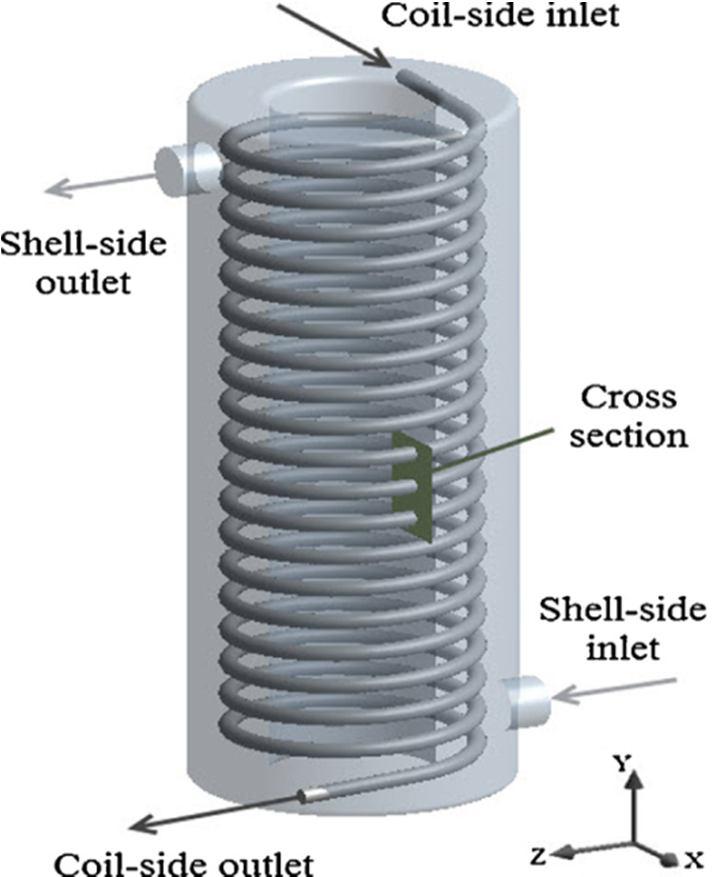
2 minute read
Helical Coil Inner Diameter
from CFD Analysis of Shell and Coil Heat Exchanger by Using Different Mass Flow Rate for Hot and Cold Flu
by IJRASET
Figure 1 : Shell and Helical Coil Heat Exchanger
II. NANO FLUID
Advertisement
Now a day, it is seen that the liquid coolants which are used today, they have very poor thermal conductivity (with the omission of liquid metal, which cannot be used at most of the relevant useful temperature ranges). For example, water is evenly poor in heat conduction than copper, in the case with engine coolants, the oils, and organic coolants. The liquid having thermal conductivity and it will be limited by the natural restriction on creating turbulence or increasing area. To overcome this problem the suspension of solid in cooling liquid is a better option and a new fluid will be made which is used to increase the thermal conduction behaviour of cooling fluids. Nanofluid are fluid particles which are a lesser amount even a μ (nearly 10-9 times smaller) in diameter and very reactive and effective material which can be used to rise factor like rate of reaction, thermal conductivity of some metal or material are that much reactive and offered four possible methods in nano fluids which may contribute to thermal conduction. 1) Brownian motion of nano particles. 2) Liquid layering at the liquid/particle edge. 3) Ballistic nature of heat transport in nano particles. 4) Nano particle clustering in nano fluids. The Brownian motion of nano particles is too slow to transfer heat over a nano fluid. This mechanism works well only when the particle collecting has both the positive and negative effects of thermal conductivity which is gained indirectly through convection.
III. LITERATURE REVIEW
Shell and Helical coil is very compact in structure and it possess high heat transfer coefficient that why helical coils heat exchangers are widely used. In literature it has been informed that heat transfer rate of helical coil is larger than straight tube. 1) Pranita Bichkar et.al. [1] has done his study in Shell and Tube Heat Exchangers with the effects of types of baffles. This paper presents the numerical simulations carried out on different baffles i.e. single segmental, double segmental and helical baffles.
This shows the effect of baffles on pressure drop in shell and tube heat exchanger. Single segmental baffles show the formation of dead zones where heat transfer cannot take place effectively. Double segmental baffles reduce the vibrational damage as compared to single segmental baffles. The use of helical baffles shows a decrease in pressure drop due to the elimination of dead zones. The less dead zones result in better heat transfer. The lower pressure drop results in lower pumping power, which in turn increases the overall system efficiency. The comparative results show that helical baffles are more advantageous than other two baffles. 2) Lei et al. [2] carried out a numerical investigation to study the impact of various baffle inclination angles on fluid flow and heat transfer of continuous helical shell and tube heat exchangers by using periodic model. From the results computed, it was observed that the best-integrated performance occurs approximately 45° helix angle. Performance of heat exchanger also depends on pressure drop. Leakage can reduce pressure drop and thus per compartment average heat transfer coefficient.




